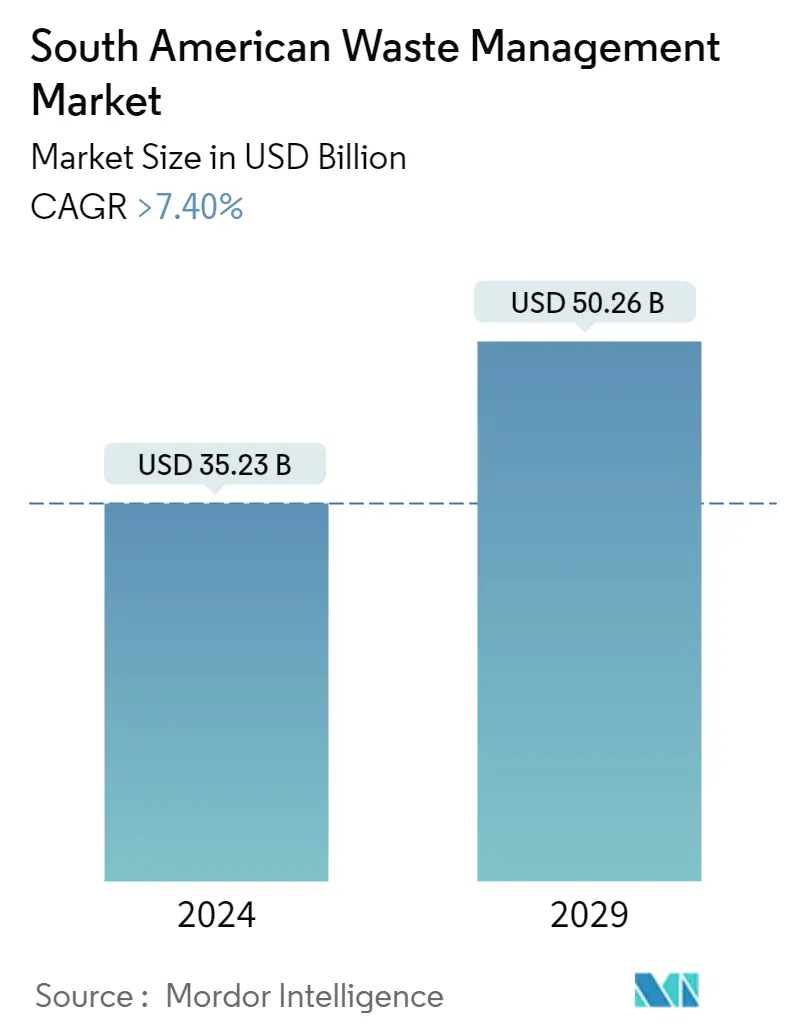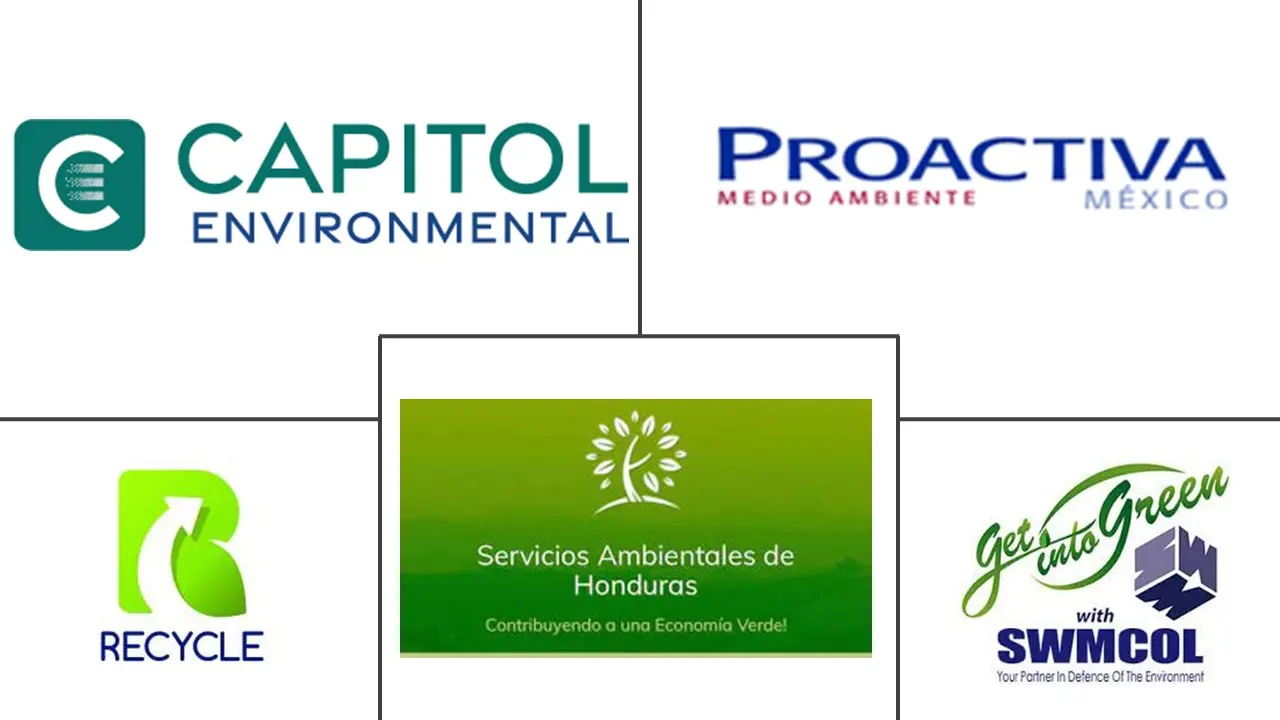Market Size of South American Waste Management Industry

| Study Period | 2020 - 2029 |
| Base Year For Estimation | 2023 |
| Market Size (2024) | USD 35.23 Billion |
| Market Size (2029) | USD 50.26 Billion |
| CAGR (2024 - 2029) | > 7.40 % |
| Market Concentration | Low |
Major Players
*Disclaimer: Major Players sorted in no particular order |
Need a report that reflects how COVID-19 has impacted this market and its growth?
South American Waste Management Market Analysis
The South American Waste Management Market size is estimated at USD 35.23 billion in 2024, and is expected to reach USD 50.26 billion by 2029, growing at a CAGR of greater than 7.40% during the forecast period (2024-2029).
The increasing waste production in the region drives the market. Furthermore, the market is driven by the increasing awareness about the 3 R's of waste management, which intends to create a circular economy.
Latin America presents an intriguing case study for recyclers. It’s an emerging market with great eventuality, indeed, though the region is facing several waste operation problems. Recycling rates generally don't exceed 10, with numerous open-air dumps in operation. Other issues include high situations of informality in the workplace and further than 40 of inaptly managed waste. Finding a result of these problems is imperative due to new transformative megatrends, similar to calls for sustainable business models and legislation in line with indirect frugality. The waste operation request in Latin America is expanding as it seeks to facilitate effectiveness, increase private participation to boost investment and incorporate digital results. Electronics recycling is a niche showing a significant pledge. However, our region is still dealing with the basics of scrap recycling in terms of setting up proper collection networks and environmentally sound establishments. While small-scale operations and homemade disassembly are still common across Latin America, Rosales notes that recyclers in Brazil and Mexico have been able to install more ‘ sophisticated technology.' This allows farther bracket of plastics, for example. The waste operation sector in Latin America has been growing and developing steadily over the last many times.
Latin America faces several waste operation problems, with recycling rates that are at most 10, a large number of open-air dumps, high levels of informality in the plant, and further than 40 of inaptly managed waste. Finding a result to this problem is imperative due to new transformative Mega Trends, similar to sustainability and indirect frugality. The waste operation market in Latin America is expanding as it seeks to improve effectiveness, increase private participation to boost investment and incorporate digital results. At a rough estimate, better waste operation could produce up to 4.8 million jobs across the region by 2030, the UN’s Economic Development Division of the Economic Commission for Latin America and the Caribbean reported. By 2050, it would be suitable to generate 7.7 million new jobs and save up to 621 billion US- Dollars annually, a UN Environment Programme report states. Chile, for example, has set a target of creating further than 180,000 formal jobs in the circular economy by 2040. A secondary problem is the integration of waste selectors into a systematized waste operation system. The informal sector consists of around four million people, according to the Regional Initiative for Inclusive Recycling. The sector contributes roughly 25 to 50 percent of all external waste collection in the region.
In the current situation, overseeing waste presents a faultless chance to use the important materials that can be set up in multitudinous kinds of inclined widgets. On the off chance that reusing is not meetly done, precious means can be lost. In Latin America, nations both produce and import-waste, shaping the indigenous sluice that exists generally on the edges of the guideline. Because of the locale's quickened financial development and position of enhancement, the measure of-waste is getting more important quicker than in other regions. On ongoing occasions, e-waste has become an extremely conspicuous issue in public plans across Latin America. Private area and common society associations also have a developing enthusiasm for diving into waste issues. This is not just because of political weight and public worries about the dangerous corridor of waste but also because of the appealing industry openings that waste directors offer. Progressively Latin American nations are seeing waste on the board as a creator of new green endeavours and business. Of specific solicitude in Latin America is the sneaking and casual assortment and destroying of waste, which prompts unreasonable contest and unusual pitfalls. These difficulties can be tended to by having the correct framework set up, including approaches and guidelines, e-waste specialist-ops, sound backing and meetly working business sectors, suitable innovation and abilities, social orders that are very important educated and aware, and obviously great observing, control, and authorization bodies.
